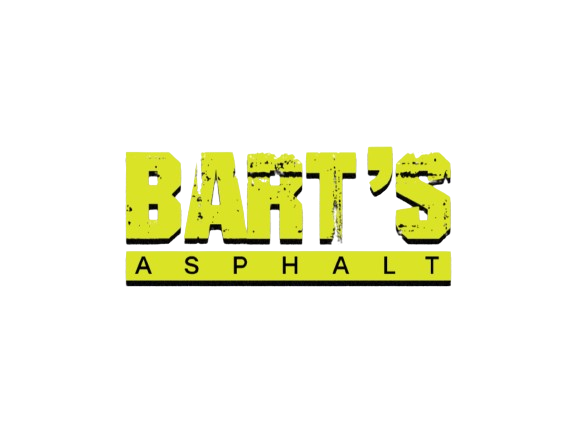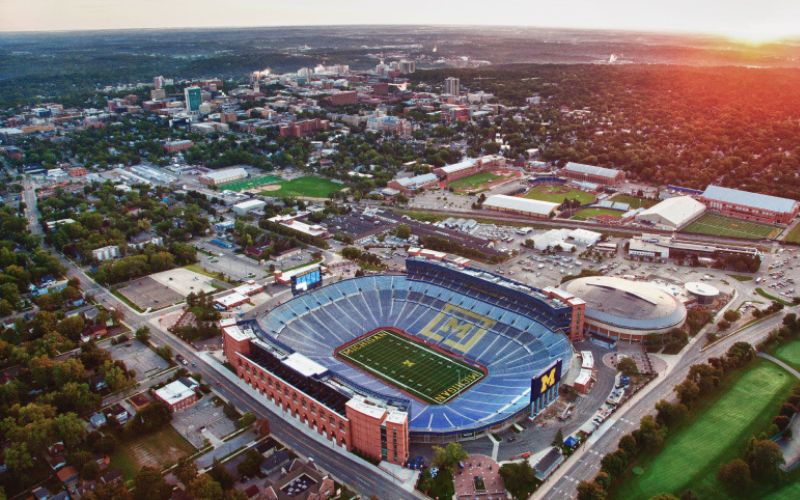Ann Arbor’s commercial landscape is uniquely defined by its proximity to the University of Michigan, creating a dynamic and challenging environment for property management. The area’s distinctive mix of academic, residential, and commercial properties demands a sophisticated approach to infrastructure maintenance, with asphalt surfaces bearing the brunt of constant activity. From bustling State Street corridors to high-traffic parking areas near campus, commercial properties face a complex set of maintenance challenges that require expert, strategic solutions.
The University of Michigan’s presence transforms Ann Arbor into a vibrant ecosystem of continuous movement, seasonal changes, and unique wear patterns. Commercial property managers must navigate a complex landscape of student populations, academic events, football weekends, and year-round institutional activities. Asphalt maintenance is not just a technical necessity but a critical strategy for protecting property value, ensuring safety, and maintaining a professional appearance.
Understanding the University District's Unique Environment
The Ann Arbor university district presents a remarkably complex environment for commercial property maintenance. Traffic patterns here differ dramatically from standard commercial areas, characterized by intense periods of activity punctuated by seasonal transitions. The arrival and departure of over 40,000 students create massive fluctuations in vehicle and pedestrian traffic that challenge even the most robust infrastructure.
Seasonal variations play a crucial role in asphalt deterioration. Move-in and move-out periods during August and January bring unprecedented stress to parking lots and roadways. Thousands of vehicles loaded with furniture, supplies, and personal belongings create concentrated loading conditions that can rapidly degrade asphalt surfaces. Football weekends add another layer of complexity, with tens of thousands of visitors flooding the area and creating intense, short-duration traffic pressures.
The demographic composition of the university area drives unique wear patterns. Young drivers, high-volume turnover, and diverse vehicle types create distinctive stress points that differ from standard commercial zones. Delivery vehicles, rideshares, campus shuttles, and personal vehicles interact in a complex ecosystem that demands specialized maintenance approaches.
Specific Asphalt Challenges in University Commercial Zones
Commercial properties near the University of Michigan face a perfect storm of asphalt deterioration factors. High-traffic areas experience concentrated wear that goes beyond typical commercial usage. Parking lots near popular campus corridors like State Street and South University Avenue endure constant loading, frequent turning movements, and minimal recovery time.
Seasonal stress factors are particularly intense. Winter brings harsh freeze-thaw cycles that can rapidly degrade asphalt surfaces. Road salt and deicing chemicals, essential for winter safety, simultaneously attack the asphalt’s structural integrity. Summer heat intensifies these damages, causing surface oxidation and creating conditions for rapid deterioration.
Special events create additional maintenance challenges. Home football games at Michigan Stadium bring over 100,000 visitors, creating massive, concentrated traffic loads. Art fairs, graduation ceremonies, and other campus-wide events further stress commercial parking areas. Each of these events represents a potential turning point for asphalt surface integrity.
Diagnostic Approaches for University Area Properties
Modern asphalt maintenance in the university district requires a sophisticated diagnostic approach that goes beyond traditional visual inspections. Advanced technologies like infrared scanning and ground-penetrating radar provide unprecedented insights into pavement condition. These tools can detect subsurface variations, potential drainage issues, and early signs of structural weakness.
Traffic pattern analysis has become a critical component of diagnostic strategies. By mapping vehicle movements, load concentrations, and seasonal variations, property managers can develop predictive maintenance approaches. This data-driven method allows for targeted repairs that address specific stress points rather than applying blanket maintenance solutions.
Seasonal damage evaluation requires a comprehensive approach. Diagnostic teams must consider multiple factors:
- Concentrated traffic during move-in/move-out periods
- Special event impacts
- Weather-related stress
- Specific usage patterns of different commercial properties
- Potential drainage and base layer issues
Tailored Maintenance Strategies
University district properties demand customized maintenance approaches that minimize business disruption while addressing complex infrastructure challenges. The goal is to create repair strategies that maintain accessibility, protect property value, and extend asphalt lifecycle with minimal operational impact.
Timing is everything in university area maintenance. Strategic scheduling must account for:
- Periods of reduced campus activity
- Breaks between academic terms
- Minimal business disruption windows
- Seasonal weather considerations
Specialized materials play a crucial role. High-performance, flexible asphalt mixes designed to withstand extreme temperature variations and concentrated traffic loads provide superior protection. These advanced materials can extend pavement life by 25-50% compared to standard approaches.
Economic Considerations for Property Managers
The financial implications of asphalt maintenance in the university district extend far beyond simple repair costs. Proactive maintenance represents a critical investment strategy that protects property value and reduces long-term expenses. A comprehensive approach to infrastructure management can yield substantial economic benefits that impact far more than just the physical surface.
Comparative cost analyses reveal dramatic differences between reactive and proactive maintenance approaches. The cost of reactive repairs can range from $20 to $50 per square foot, while proactive maintenance strategies typically cost between $5 and $10 per square foot. Complete pavement replacement represents the most expensive option, often exceeding $75 to $100 per square foot. These figures demonstrate the profound financial advantages of a strategic, preventative maintenance approach.
Property managers must consider a broad range of economic factors beyond immediate repair costs. Potential liability from poorly maintained surfaces can result in significant financial risks. The impact on property attractiveness to tenants can directly influence rental rates and occupancy levels. Long-term infrastructure protection becomes a crucial consideration, with well-maintained surfaces extending the lifecycle of the entire property.
Insurance risk mitigation represents another critical economic consideration. Properties with comprehensive maintenance strategies often benefit from reduced insurance premiums and decreased likelihood of costly claims. The professional appearance and demonstrated care for infrastructure can enhance the overall value of commercial properties in the competitive university district market.
Seasonal Maintenance Planning
Seasonal maintenance in Ann Arbor’s university district requires a sophisticated, adaptive approach that anticipates the unique challenges of each academic term. Winter preparation represents the most critical maintenance window, with strategies designed to protect asphalt surfaces from Michigan’s most destructive environmental conditions.
Winter maintenance begins well before the first snowfall. Late fall provides an optimal window for comprehensive repairs, crack sealing, and protective treatments. The goal is to create a resilient surface that can withstand the extreme stress of winter road treatments, frequent plowing, and constant freeze-thaw cycles. Specialized sealants applied during this period create a protective barrier that shields the asphalt from moisture infiltration and chemical damage.
Summer emerges as the ideal period for more extensive repair and renovation projects. The extended daylight hours and stable temperatures provide perfect conditions for comprehensive asphalt work. Property managers can leverage the reduced campus activity during summer months to undertake more significant maintenance projects with minimal disruption.
Move-in and move-out periods require specialized maintenance approaches. These intense weeks represent some of the most challenging periods for asphalt surfaces, with thousands of vehicles creating concentrated stress points. Strategic repair and reinforcement before these periods can significantly mitigate potential damage.
Football season presents its own unique maintenance challenge. Home games at Michigan Stadium bring over 100,000 visitors, creating massive, short-duration traffic loads that can rapidly impact parking areas and access roads. Specialized pre-season maintenance and strategic repair approaches can help commercial properties manage these intense usage periods.
Technology and Innovation in University Area Asphalt Management
The future of asphalt maintenance in university districts is being shaped by groundbreaking technological innovations that promise to revolutionize infrastructure management. Advanced sensor technologies have emerged as a game-changing approach to pavement monitoring, providing property managers with unprecedented insights into surface conditions and potential deterioration.
Smart monitoring systems represent a quantum leap in infrastructure management. These sophisticated technologies enable continuous, real-time assessment of pavement conditions, allowing for predictive maintenance strategies that were previously impossible. By tracking minute changes in surface integrity, these systems can anticipate potential issues before they become critical problems. This approach transforms asphalt maintenance from a reactive process to a proactive, data-driven strategy that can significantly reduce long-term maintenance costs and extend pavement lifecycle.
Environmental sustainability has become a critical focus in asphalt technology development. Eco-friendly maintenance solutions are pushing the boundaries of traditional repair approaches, integrating recycled materials and developing techniques that dramatically reduce the carbon footprint of infrastructure maintenance. Innovative manufacturers are creating asphalt mixes that incorporate recycled materials, develop more sustainable production methods, and offer longer-lasting performance with reduced environmental impact.
The field of materials science continues to deliver remarkable advancements in asphalt technology. Polymer-modified mixes now offer unprecedented levels of flexibility and environmental resistance. These advanced materials can withstand extreme temperature variations, resist cracking, and provide superior performance in high-stress environments like university districts. By enhancing the molecular structure of asphalt, researchers have developed solutions that can significantly extend pavement lifecycle while improving overall surface performance.
Compliance and Safety Considerations
Compliance in the university district represents a multifaceted challenge that extends far beyond basic maintenance requirements. The Americans with Disabilities Act (ADA) establishes stringent guidelines for accessibility that demand meticulous attention to detail in parking areas and roadways. Property managers must navigate a complex landscape of regulatory requirements that encompass precise measurements, specialized markings, and consistent maintenance of accessible routes.
Safety considerations demand a comprehensive, holistic approach that addresses multiple dimensions of infrastructure management. Pedestrian movement patterns must be carefully analyzed to create surfaces that facilitate safe, efficient navigation. Emergency vehicle access requires careful planning, ensuring that every inch of pavement supports potential life-saving responses. Lighting, visibility, surface evenness, and drainage all play critical roles in creating safe, functional commercial spaces.
Navigating the regulatory landscape requires an intricate understanding of multiple layers of governance. Local Ann Arbor municipal regulations intersect with university-specific requirements and broader Michigan state infrastructure standards. ADA accessibility guidelines provide another critical layer of compliance, while fire and emergency access regulations add additional complexity to infrastructure management. Successfully managing these various requirements demands a sophisticated, nuanced approach that goes beyond simple maintenance.
Bart's Asphalt Approach to University Area Maintenance
Our approach to university district asphalt maintenance represents the culmination of decades of local expertise, cutting-edge technology, and a deep understanding of Ann Arbor’s unique commercial landscape. We have developed a comprehensive methodology that transcends traditional maintenance services, offering a holistic infrastructure management strategy tailored specifically to the demanding university environment.
Local expertise forms the cornerstone of our approach. Our team possesses an intimate understanding of the University of Michigan area, including its unique traffic patterns, environmental challenges, and specific infrastructure demands. This hyperlocal knowledge allows us to develop maintenance strategies that address the nuanced requirements of university district properties with unprecedented precision.
Advanced diagnostic technologies enable us to provide insights that go far beyond traditional inspection methods. By utilizing state-of-the-art tools like infrared scanning and ground-penetrating radar, we can create comprehensive assessments that reveal hidden infrastructure challenges. Our approach combines these technological insights with customized maintenance strategies designed to minimize business disruption and maximize long-term infrastructure performance.
We recognize that each commercial property in the university district is unique. Our team takes a collaborative approach, working closely with property managers to develop tailored solutions that address specific operational needs, budget constraints, and long-term infrastructure goals. Premium materials, advanced application techniques, and comprehensive planning ensure that we deliver solutions that truly protect and enhance our clients’ valuable assets.
Conclusion
Effective asphalt maintenance in Ann Arbor’s university district is a complex, strategic endeavor that requires specialized knowledge, advanced technologies, and a deep understanding of the area’s unique challenges. Commercial property managers must view infrastructure maintenance as a critical investment strategy that protects property value, ensures safety, and supports operational efficiency.
The future of university district infrastructure management lies in proactive, technology-driven approaches that anticipate and address potential challenges before they become critical issues. By combining advanced diagnostic techniques, innovative materials, and strategic maintenance planning, property managers can create resilient, high-performance asphalt surfaces that meet the demanding requirements of this dynamic environment.
Ready to protect your university district commercial property’s infrastructure? Contact Bart’s Asphalt for a comprehensive evaluation and customized maintenance strategy that will safeguard your investment for years to come.
Frequently Asked Questions
Q: How often should our university area property’s asphalt be professionally assessed?
A: We recommend comprehensive professional inspections twice annually – once before winter and once after the spring semester – with additional spot checks during high-stress periods.
Q: Can you maintain our asphalt without disrupting campus operations?
A: Absolutely. We specialize in phased maintenance approaches that minimize disruption, often working during off-peak hours or academic breaks.
Q: What makes your approach unique to university district properties?
A: Our deep understanding of Ann Arbor’s specific challenges, combined with advanced technologies and locally engineered maintenance strategies, allows us to provide unparalleled asphalt management solutions.



